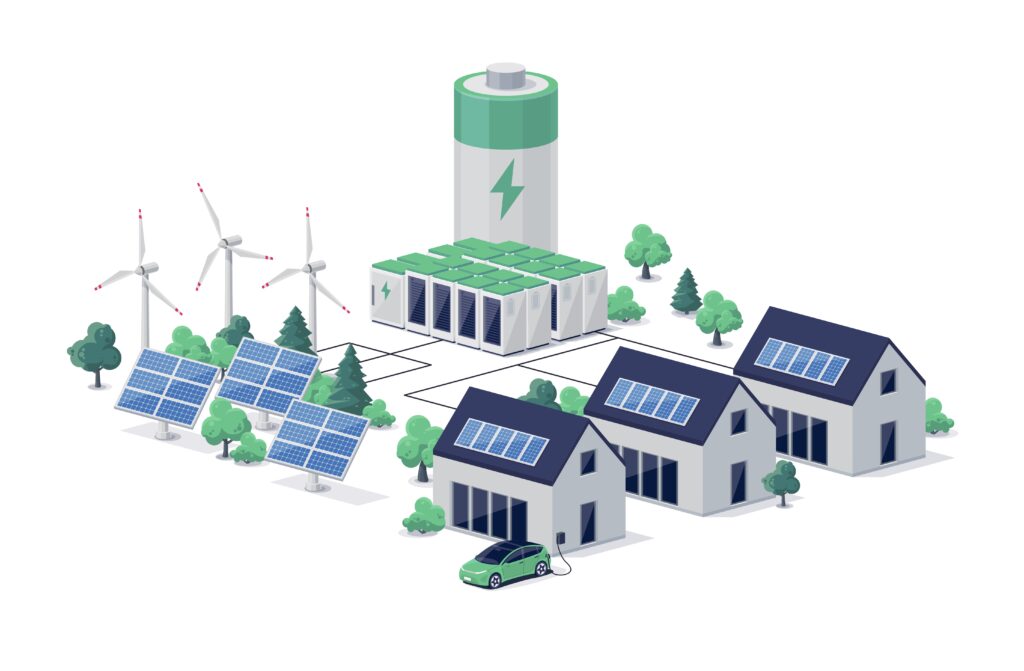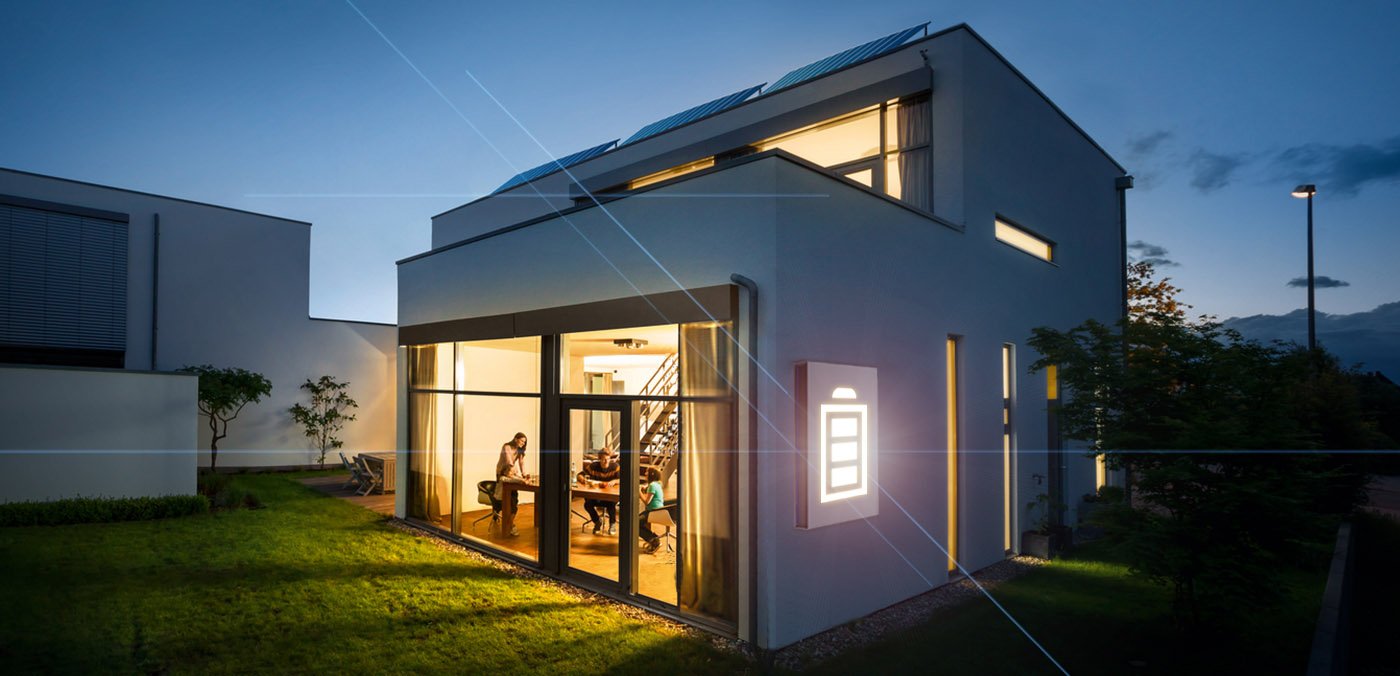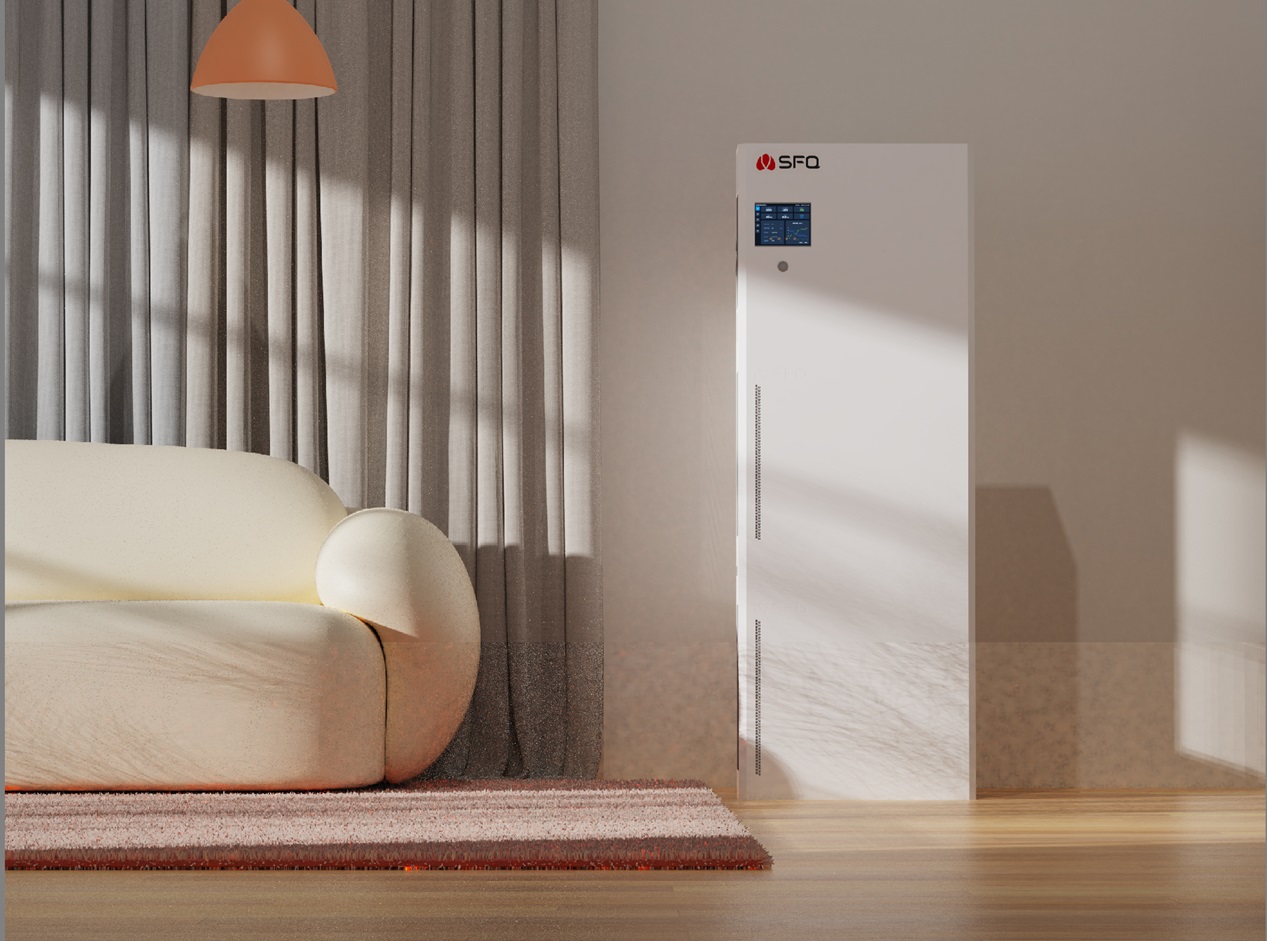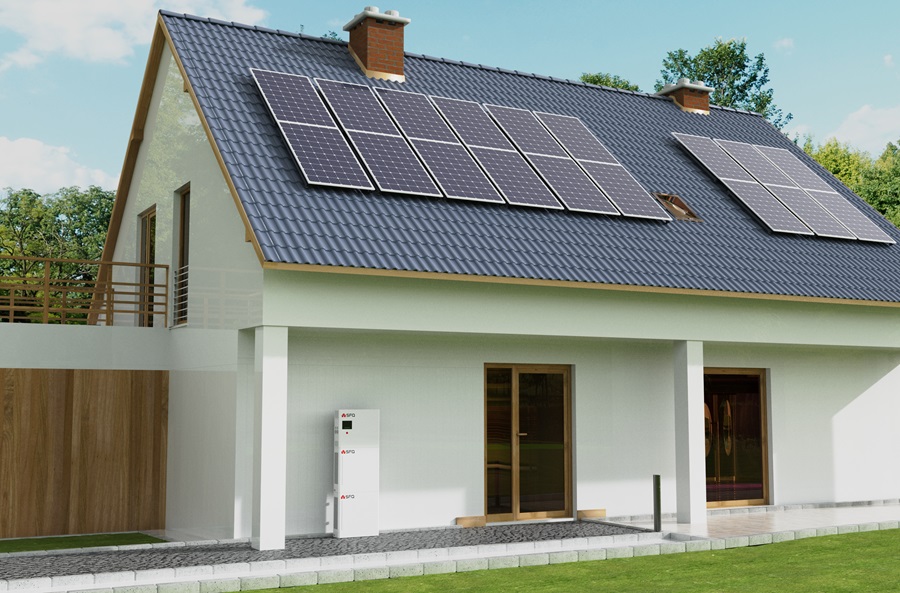Residential Energy Storage System and the Benefits
With the global energy crisis worsening and increasing awareness of environmental protection, people are paying more attention to sustainable and environmentally friendly ways of energy utilization. In this context, residential energy storage systems are gradually gaining public attention as an important solution to energy problems and a means to achieve a green lifestyle. So, what exactly is a residential energy storage system, and what benefits does it offer?
I. Basic Concepts of Residential Energy Storage Systems
A residential energy storage system, as the name implies, is a type of energy storage device used in a home environment. This system can store excess electricity generated within the home or low-cost electricity purchased from the grid and release it when needed to meet the home’s daily electricity needs. Typically, a residential energy storage system consists of a battery pack, inverter, charging equipment, etc., and can be integrated with a smart home system for automated management.
II. Benefits of Residential Energy Storage Systems
Energy Saving and Emission Reduction: Residential energy storage systems reduce reliance on traditional energy sources by storing excess electricity and decreasing demand on the grid. This helps reduce carbon emissions, protect the environment, and promote sustainable living.
Self-Sufficiency: Residential energy storage systems enable homes to achieve a level of energy self-sufficiency, reducing their dependence on the grid for power. This enhances a household’s energy independence and its ability to handle energy crises effectively.
Lower Electricity Bills: Residential energy storage systems allow households to purchase electricity during off-peak hours and utilize stored electricity during peak hours. This practice helps lower electricity bills and offers financial savings to the household.
Emergency Backup: In the event of a grid outage, a residential energy storage system can provide backup power to ensure that critical equipment (e.g., lighting, communications equipment, medical devices, etc.) functions properly. This enhances the safety and convenience of the home.
Optimized Energy Management: Residential energy storage systems are equipped with an energy management system that monitors and controls home energy usage. It intelligently manages and optimizes power supply based on electricity demand and pricing, thereby increasing energy use efficiency.
Supporting Energy Networks: When connected to a server via the Internet, a residential energy storage system can offer short-term services to the energy network, such as alleviating demand pressure during peak hours and providing frequency correction. This helps balance the load on the energy network and enhances its stability and reliability.
Overcoming Grid Losses: Transmission losses within the grid make it inefficient to transport power from generating stations to populated areas. Residential energy storage systems enable a larger portion of on-site generation to be consumed locally, reducing the need for grid transportation and improving overall efficiency.
Improved Energy Quality: Residential energy storage systems can balance power loads, smooth peaks and valleys, and enhance power quality. In regions with unstable or poor-quality power supply, these systems can provide households with stable, high-quality power.
III. How to Use a Residential Energy Storage System
Utilizing a residential energy storage system is relatively straightforward and user-friendly. The following instructions will provide a detailed guide on its usage to help you better comprehend and operate the system:
1.Power Access and Charging Accessing the Power Supply:
(1) Connect the energy storage cabinet to the power supply, ensuring a correct and stable connection.
(2) For solar-based energy storage systems, ensure proper connection of solar panels to the energy storage cabinet and maintain clean panels for efficient charging.
Initiating Charging:
(1) The energy storage cabinet will commence charging until the battery module storage reaches full capacity. It is important to avoid overcharging during this process to preserve battery life.
(2) If the system features intelligent charging management, it will automatically adjust the charging strategy based on power demand and electricity prices to optimize energy usage.
2.Power Supply and Management Power Supply:
(1) When power is required, the energy storage cabinet will convert the power into AC power through the inverter and distribute it to home appliances via the output port.
(2) During power supply, attention should be given to the usage and distribution of power to prevent individual devices from consuming excessive power, which could lead to the energy storage system being unable to meet power demands.
Power Management:
(1) Residential energy storage systems typically come equipped with an energy management system that monitors and controls home energy consumption.
(2) Based on electricity demand and pricing, the system can intelligently manage and optimize electricity supply. For instance, it may purchase electricity during off-peak hours and utilize stored electricity during peak hours to reduce electricity costs.
3.Precautions and Maintenance
Precautions:
(1) Use the energy storage cabinet within the specified ambient temperature range to prevent overheating or overcooling.
(2) In case of any malfunction, abnormality, or safety issue, cease use immediately and contact the after-sales service department.
(3) Avoid unauthorized repairs and modifications to prevent safety hazards.
Maintenance:
(1) Regularly clean the external surface of the energy storage cabinet and wipe it with a soft cloth.
(2) If the Energy Storage Cabinet will not be used for an extended period, disconnect it from the power supply and store it in a dry, ventilated place.
(3) Adhere to the manufacturer’s maintenance guidelines for routine inspection and maintenance to ensure proper operation and extend the system’s lifespan.
4.Advanced Functions and Applications
Battery Discharge Strategy Based on Load Prioritization:
Prioritization order: PV power generation first to meet load demand, followed by storage batteries, and lastly, grid power. This ensures that renewable energy and storage batteries are utilized first to meet household electricity needs during low power supply.
Strategy Based on Energy Prioritization:
After supplying power to loads, excess PV generation is used to recharge energy storage batteries. Only when the battery is fully charged and surplus PV power remains will it be connected to or sold to the grid. This optimizes energy use and maximizes economic benefits.
In conclusion, residential energy storage systems, as a new type of home energy solution, offer various benefits such as energy savings, emission reduction, self-sufficiency, reduced electricity costs, emergency backup, optimal energy management, support for energy networks, overcoming grid losses, and improved energy quality. With ongoing technological advancements and cost reductions, residential energy storage systems will see wider adoption and promotion in the future, contributing significantly to sustainable development and a greener lifestyle for humanity.
IV.SFQ Energy Storage Residential Storage Product Recommendation
In today’s era of pursuing green, smart, and efficient living, SFQ Residential Energy Storage System have become the ideal choice for more and more families due to their excellent performance and thoughtful design. The product not only integrates a number of advanced technologies but also focuses on user experience, making home energy management simpler and more convenient.
Firstly, SFQ Residential Energy Storage System are easy to install with their integrated design. By integrating components and simplifying wiring, users can easily set up the system without complex configurations or additional equipment. This design not only saves installation time and costs but also improves the overall stability and reliability of the system.
Secondly, the product features a user-friendly web/application program interface that provides a seamless user experience. The interface is rich in content, including real-time energy consumption, historical data, and system status updates, allowing users to monitor their home energy usage. Additionally, users can remotely control and monitor the system through the application or an optional remote control device for more convenient management.
The SFQ Residential Energy Storage System excels in charging and battery life. It is equipped with a fast charging function that quickly replenishes the energy storage to meet the household’s electricity needs during peak energy demand or when grid access is unavailable for extended periods. The long battery life ensures long-lasting and stable operation of the system, providing users with reliable power protection.
In terms of safety, SFQ Residential Energy Storage System are reliable. They integrate an intelligent temperature control mechanism to ensure the system operates optimally. By actively monitoring and regulating the temperature, it prevents overheating or extreme cooling, guaranteeing stable system operation. Various safety and fire protection features, such as over-current protection, over-voltage protection, and short-circuit protection, are also integrated to mitigate potential risks and ensure home safety.
Regarding design, SFQ Residential Energy Storage System consider the aesthetics and practicality of modern homes. Their simple and stylish design enables seamless integration into any home environment, blending harmoniously with modern interior styles while adding visual delight to the living space.
Finally, SFQ Residential Energy Storage System offer compatibility with a wide range of operating modes and multi-function. Users can select different operating modes, such as grid-connected or off-grid, based on their specific energy needs. This flexibility allows users to customize the system according to their energy preferences and requirements, enabling more personalized energy management.
In conclusion, SFQ Residential Energy Storage System are ideal for home energy management due to their all-in-one design, user-friendly interface, fast charging and long battery life, intelligent temperature control, and minimalist design for seamless integration into modern homes. If you seek an efficient, safe, and easy-to-use residential energy storage system, then SFQ home energy storage products are the right choice for you.
Post time: Jun-04-2024






